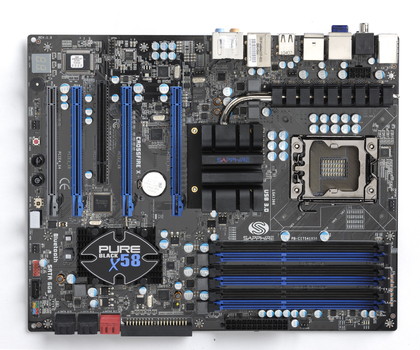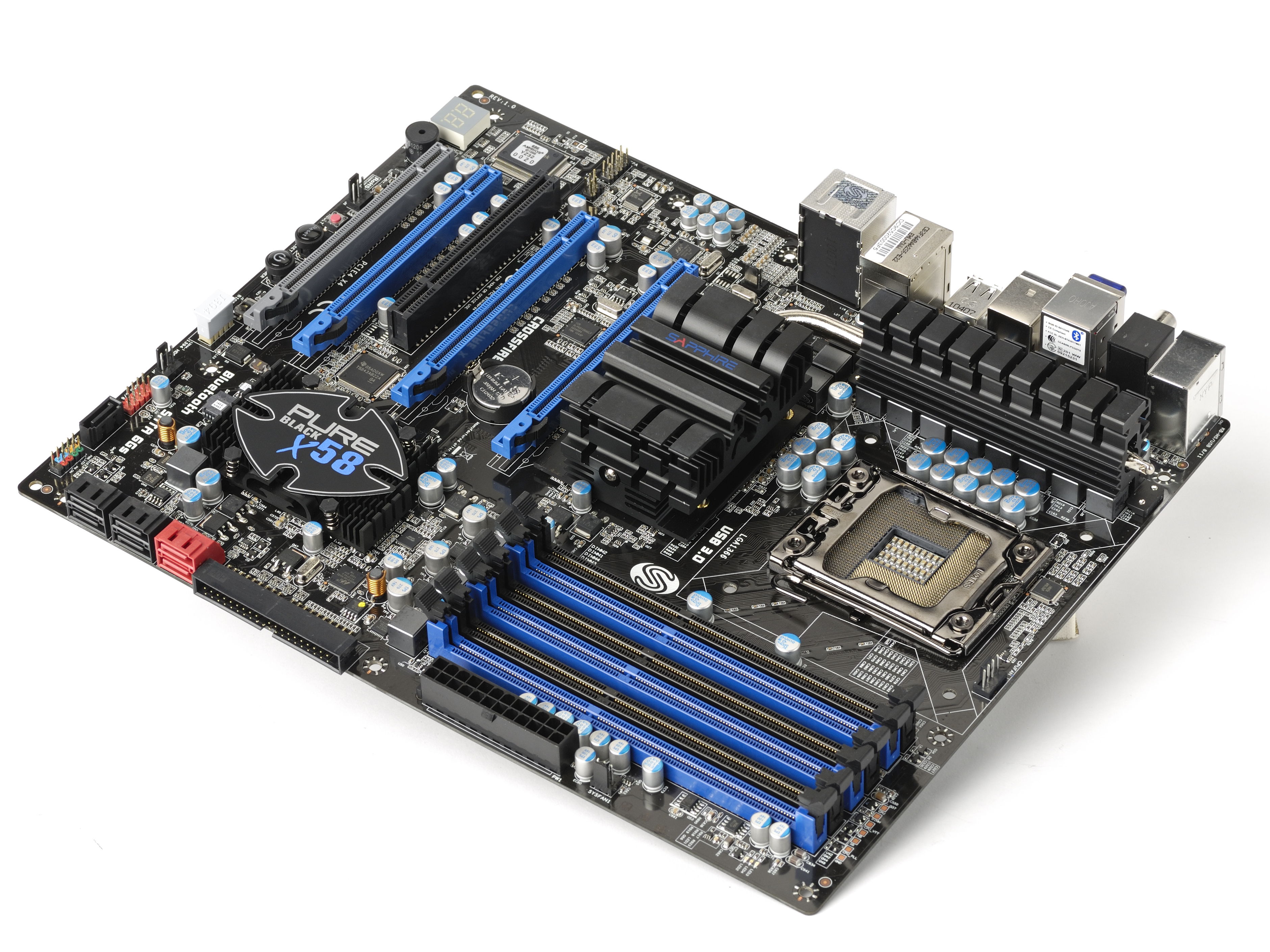Why you can trust TechRadar

You could probably have guessed the end result of this first Intel effort from Sapphire without knowing anything about the actual board itself.
Nice try, but must do better.
Despite having a fair chunk of EVGA's old motherboard team on the Sapphire books this first release looks just a little naïve.
The price itself is a massive sticking point. Coming in above the £200 mark for an X58 board is practically unforgivable right now, especially given that it really offers nothing new over the competition to differentiate itself.
And especially given the price and performance of the Sandy Bridge setups.
Realistically only the insanely pricey hexcore processors are capable of besting the new second generation of Intel's Core CPUs. And if you were going to pay over the odds for a CPU you'd pay over the odds for the motherboard too.
But importantly you'd want that motherboard to offer you something special to go along with your special CPU.
The Pure Black X58, unfortunately for Sapphire, simply doesn't.
My first reaction to the board was that it would make a good £130-£150 budget X58. That's more or less borne out by the stock-clocked benchmark results where it stands toe-to-toe with Asus' P6X58D-E, a £150 motherboard itself.
Unfortunately the very existence of that Asus board makes the Pure Black X58 an almost impossible sell.
Granted Sapphire is fairly insistent that its board's price will drop once the volume increases in the stores, but even if it were comparable in price it still lacks the performance punch to justify itself.
While at stock level the boards are level, once you try messing with the clockspeeds you can quickly tell which the more competent board is.
The i7 920 we were playing with tapped out once we got it to the 3.6GHz mark, which isn't bad considering that's almost a 1GHz boost. The P6X58D-E though was happy to be stably pushed right up to 4GHz.
Realistically this is likely all down to Asus' decision to include a 16+2 power phase design in its board against the Pure Black's 8+2 array. The extra stability that affords allows you to push the CPU far harder.
While we understand why there's no SLI certification in the Sapphire board that doesn't change the fact as a consumer that's a feature with a strong draw right now. The performance of Nvidia's cards is better than it's ever been and again the Asus board has the edge here too.
But for a first Intel board it's not a bad effort. Trying to position it as an enthusiast-class board with a price-tag to match though isn't going to stick; the Sapphire Pure Black X58 just doesn't have the technological cojones for that.
We liked
The variety of connections available on the board is impressive, and the addition of the legacy PATA socket is a welcome one.
We disliked
Despite marketing to the contrary the Pure Black is not an overclocker's board, the budget power phase design makes sure of that.
It's also a shame there isn't a second x16 PCI-E socket, and understanding though we are of the lack of SLI, it's a feature you can find in cheaper boards.
Current page: Sapphire Pure Black X58 - Verdict
Prev Page Sapphire Pure Black X58 - Benchmarks